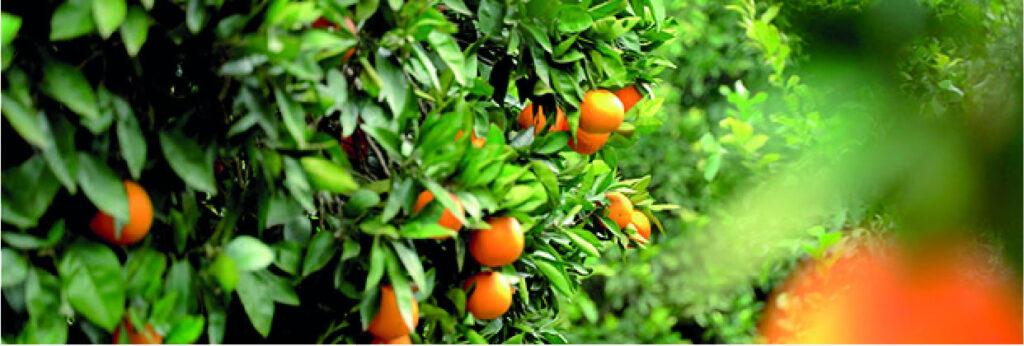
Anatolia, a region in modern-day Turkey, has been a cradle of civilization for thousands of years. The fertile lands and temperate climate have made it ideal for agriculture, particularly fruit cultivation. The ancient people of this region held a deep understanding of the land, its resources, and the art of growing fruits. In this blog post, we will explore the rich history and traditions of Anatolian fruit cultivation and how these practices continue to shape the industry today.
The Beginnings of Fruit Cultivation in Anatolia
The history of fruit cultivation in Anatolia dates back to the Neolithic period, around 10,000 BCE. Archaeological evidence suggests that the people of this region were among the first to domesticate plants and animals, laying the groundwork for modern agriculture. Early inhabitants of Anatolia cultivated a variety of fruits, including grapes, figs, and olives, which remain important crops in the region today.
As civilizations grew and trade routes were established, fruit cultivation in Anatolia expanded. The Hittites, one of the region’s most influential ancient civilizations, were known for their advanced agricultural techniques and widespread cultivation of grapes and other fruits. The Hittite Empire, which spanned from 1600 to 1200 BCE, even had laws in place to regulate the planting and harvesting of fruit trees.
The Influence of Greek and Roman Cultures
The cultural exchange between Anatolia and the neighboring Greek and Roman civilizations had a significant impact on fruit cultivation practices. The Greeks introduced new fruit varieties, such as pears and apples, which quickly became popular in Anatolia. The Romans, on the other hand, brought their knowledge of advanced irrigation systems and grafting techniques, enabling the cultivation of a broader range of fruit species in the region.
Throughout the Roman period, fruit cultivation in Anatolia flourished. The region’s fruits were highly prized and exported to various parts of the empire. Ancient texts mention Anatolian fruits as key ingredients in Roman recipes, demonstrating their widespread popularity.
The Ottoman Empire and Fruit Cultivation
During the Ottoman Empire, which spanned from the 14th to the early 20th century, fruit cultivation in Anatolia reached new heights. The Ottomans placed a strong emphasis on agriculture and horticulture, investing in the development of vast gardens and orchards. The rulers of the empire were known for their love of fruits, and many varieties were cultivated in the imperial gardens.
The Ottoman Empire’s extensive trade network enabled the exchange of fruit varieties and cultivation techniques between Anatolia and other parts of the world. This period saw the introduction of many new fruit species, such as apricots, peaches, and cherries, which thrived in the fertile Anatolian soil.
Traditional Fruit Cultivation Techniques
Throughout history, the people of Anatolia have developed and preserved unique fruit cultivation techniques that have been passed down through generations. One such practice is the use of dry farming, which relies on the region’s natural rainfall patterns to provide water for crops. This method has been used for thousands of years and continues to be an essential part of sustainable fruit cultivation in Anatolia today.
Another key tradition is the art of grafting, a technique that involves joining the tissues of two different plants to create a new, more resilient plant variety. Grafting has played a significant role in the development of the diverse array of fruit species found in Anatolia.
The Continuation of Anatolian Fruit Cultivation Traditions
Today, Anatolian fruit cultivation traditions continue to shape the industry, with local farmers and producers taking great pride in their heritage. At Calculus Produce, we are committed to preserving these time-honored techniques while embracing modern technology and sustainable practices to ensure the highest quality fruits.
Our homegrown gardens are nurtured with care, combining traditional methods and cutting-edge innovations to cultivate a diverse array of fruit species. We believe in maintaining a strong connection to our Anatolian roots while fostering a commitment to environmental sustainability and responsible farming practices.
One example of our dedication to preserving Anatolian fruit cultivation traditions is our focus on growing heirloom fruit varieties. These fruits have been cultivated for generations and are often characterized by their unique flavors and textures, reflecting the rich history of the region.
In addition to preserving traditional fruit varieties, we also prioritize working with local farmers who share our passion for Anatolian fruit cultivation. By partnering with these knowledgeable growers, we ensure that our fruits are grown with the utmost care and respect for the land and its resources.
The rich history and traditions of Anatolian fruit cultivation are an essential part of the region’s cultural identity. By continuing to embrace these time-honored techniques and investing in sustainable farming practices, we at Calculus Produce are dedicated to preserving this heritage while offering exceptional fruits that delight and nourish our customers.
We invite you to experience the unique flavors and unparalleled quality of Anatolian fruits, a testament to the passion, expertise, and commitment of generations of growers and cultivators. Discover the fruitful bounty of Anatolia, and savor the delicious taste of history in every bite.


